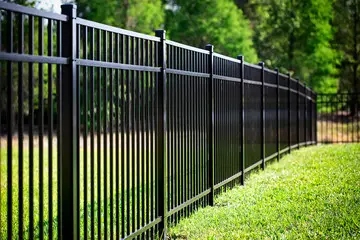
A new technological strategy produced by University of Minnesota researchers will allow for critical stakeholders to establish important crop sorts previously in the season than at any time ahead of.
Satellite imagery has very long been used by agricultural agencies to explain to what crops are grown in the area. This enables stakeholders to forecast grain supplies, assess crop destruction thanks to environmental elements and coordinate provide-chain logistics.
When this details is essential, at the moment accessible crop mapping products and solutions are not able to deliver these figures early in the farming time. For example, the crop information layer (CDL), a countrywide crop mapping solution by the USDA Nationwide Agricultural Figures Services, is usually not produced till four to six months just after the drop harvest. This is owing to the prolonged ground data selection course of action that is required for education the backend algorithm for separating crops from satellite imagery.
In a review recently released in Distant Sensing of Surroundings, University of Minnesota scientists make clear their improvement of a new approach that would allow stakeholders to know wherever corn and soybean crops are grown as early as July, with comparable accuracy to the USDA CDL, and devoid of the require for floor surveys.
With satellite info availability expanding swiftly and advances in artificial intelligence and cloud computing, the bottleneck of satellite-centered crop kind mapping has shifted towards a absence of floor truth of the matter labels, which are data of crop types at distinct areas. In these scenarios, researchers have attempted to use out-of-date labels to establish crops in the concentrate on year.
For example, to map crop styles in 2022, experts would establish a design working with labels gathered in 2021, 2020, or even earlier in order to create a design when a new floor study is not accessible or not feasible. Nonetheless, this sort of product normally fails due to the fact variations in soil, temperature and administration procedures in a given yr can transform how crops search in satellite imagery.
To bypass the need to have for amassing ground labels, the approach made by this investigate workforce generates pseudo-labels (they are identified as “pseudo” since these labels are not gathered from fields) in any concentrate on yr primarily based on historical crop style maps.
This method mimics how humans establish objects centered on their relative positions (also referred to as topology relationships) on a photo and employs a laptop or computer-eyesight design to discover corn and soybean based on their topology relationships in a two-dimensional space derived from satellite imagery. These generated pseudo-labels have similar high-quality to field-gathered labels and can be applied for the essential process of crop style mapping in the early time.
“This is a paradigm-shifting solution that takes advantage of computer vision know-how to mimic how human beings determine distinct points on images. This is not only enjoyment but also highly effective for the reason that it allows to help you save the time and labor of conducting subject surveys and lets us to precisely predict crop kinds as early as July,” reported Zhenong Jin, Ph.D., assistant professor in the Department of Bioproducts and Biosystems Engineering at the College of Minnesota.
“We found secure topology associations existed for distinct crops in distinct years and diverse nations, indicating that our strategy has the possible to be prolonged to a general framework that functions for numerous unique situations,” said Chenxi Lin, a Ph.D. applicant and very first creator of the work encouraged by Jin.
The examine also discovered:
- The method could produce pseudo-labels of identical high quality to area-gathered labels for distinct crops developed in unique many years and various regions.
- In the U.S., the precision of crop sort mapping dependent on produced pseudo-labels could approximate USDA’s cropland details layer (CDL) product or service at minimum 6 months earlier.
- In northern France, this process can help noticeably lessen the selection of ground labels needed to generate exact crop maps, which can be a obstacle due to the selection of crops grown in the area.
In addition, the high-excellent, early-season crop variety maps produced from the proposed strategy are also beneficial for a wide variety of other activities.
A thorough and well timed monitoring on the insured croplands is useful for insurance coverage businesses to far better structure their merchandise. In addition, the crop acreage and manufacturing estimation can support commodity traders improved job price ranges, and hedge appropriately.
As the scientists appear ahead, they acknowledge that the implementation of this tactic depends on sufficient historic ground truth labels, which is not an situation for resource-plentiful regions like the United States, but is a constrained resource for areas like Africa.
Nonetheless, implementing the strategy in underdeveloped countries like many in Africa could have additional profound implications for the best purpose of attaining a food items-safe earth. The team plans to broaden the framework offered in this review to these areas by incorporating other highly developed deep studying algorithms to reduce the need to have for historical labels.
Tillage and deal with cropping effects on grain generation
Chenxi Lin et al, Early- and in-season crop style mapping without recent-year floor reality: Producing labels from historic data by using a topology-based mostly tactic, Distant Sensing of Environment (2022). DOI: 10.1016/j.rse.2022.112994
Quotation:
Utilizing technology to discover crop types early in the season, without the need of getting into the industry (2022, March 31)
retrieved 6 April 2022
from https://phys.org/news/2022-03-technologies-crop-early-time-area.html
This doc is subject matter to copyright. Aside from any truthful dealing for the objective of non-public review or investigation, no
aspect may be reproduced without the prepared authorization. The material is furnished for details uses only.




